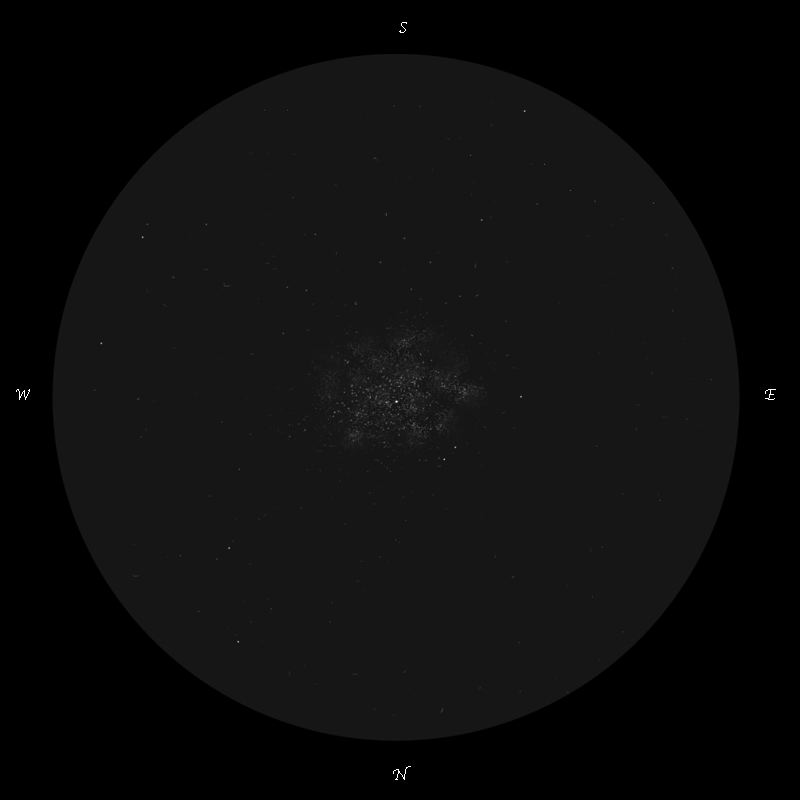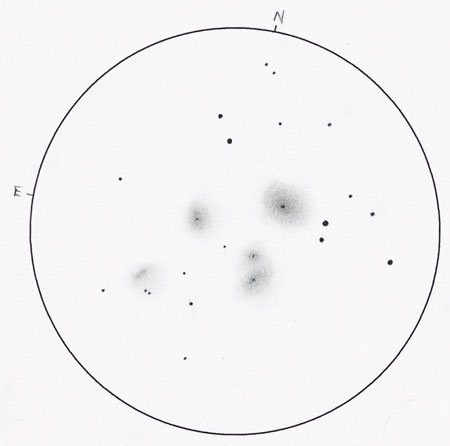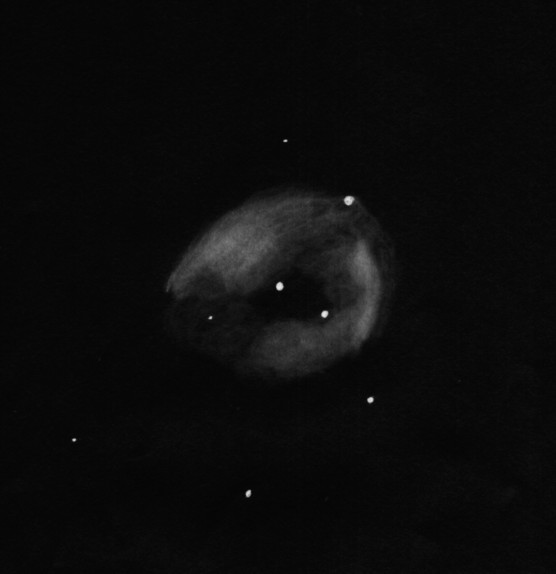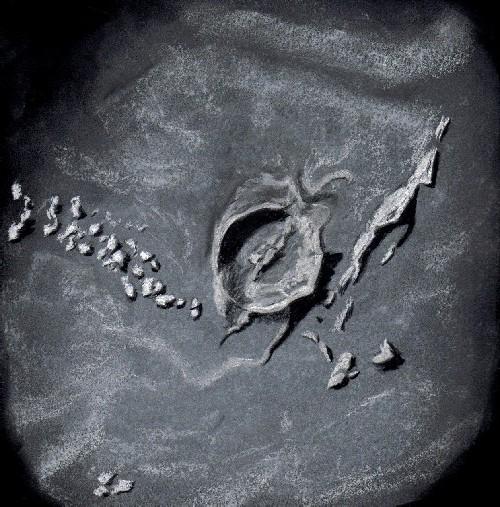
M6 – The Butterfly Cluster
Sketch and details by Rony De Laet
One of the binocular highlights of Scorpius is M6, the Butterfly Cluster. This bright open cluster forms a splendid duo with M7. These two bright – naked eye – clusters were known since antiquity. While they can be squeezed in a single field of view, I rather prefer to dedicate a single sketch to each one of this brilliant duo.
M6 can be found at the tail of the Scorpius at 5° north of Lambda Scorpii. In a pair of binoculars, the cluster appears 15’ wide. A dozen stars are visible with direct vision. Averted vision can reveal another 15 stars. The binocular low power does not make it easy to distinguish the individual stars in this dense packed cluster. So take all the time you need to study M6 in detail. The lucida of the cluster, at the edge of the eastern wing of the butterfly, is the orange variable BM Sco. Don’t be surprised that your observation does not match my sketch, because BM Sco can fluctuate between mag 5.8 and 8.0. The Butterfly Cluster is 1600 l-y away. Its true size is estimated at 14 l-y.
Site : Andratx, Mallorca, Spain
Date : July 25, 2008
Time : around 22.15UT
Binoculars : TS 15×70 Marine
FOV: 4.4°
Filter : none
Mount : Trico Machine Sky Window
Seeing : 2,5/5
Transp. : 4/5
Sky brightness : 21.00 magnitudes per square arc second near zenith (SQM reading).
Nelm : 6.4
Sketch Orientation : N up, W right.
Digital sketch made with Photo Paint, based on a raw pencil sketch.
(Note: if the sketch does look too dark on your monitor, try to darken the room.)



















